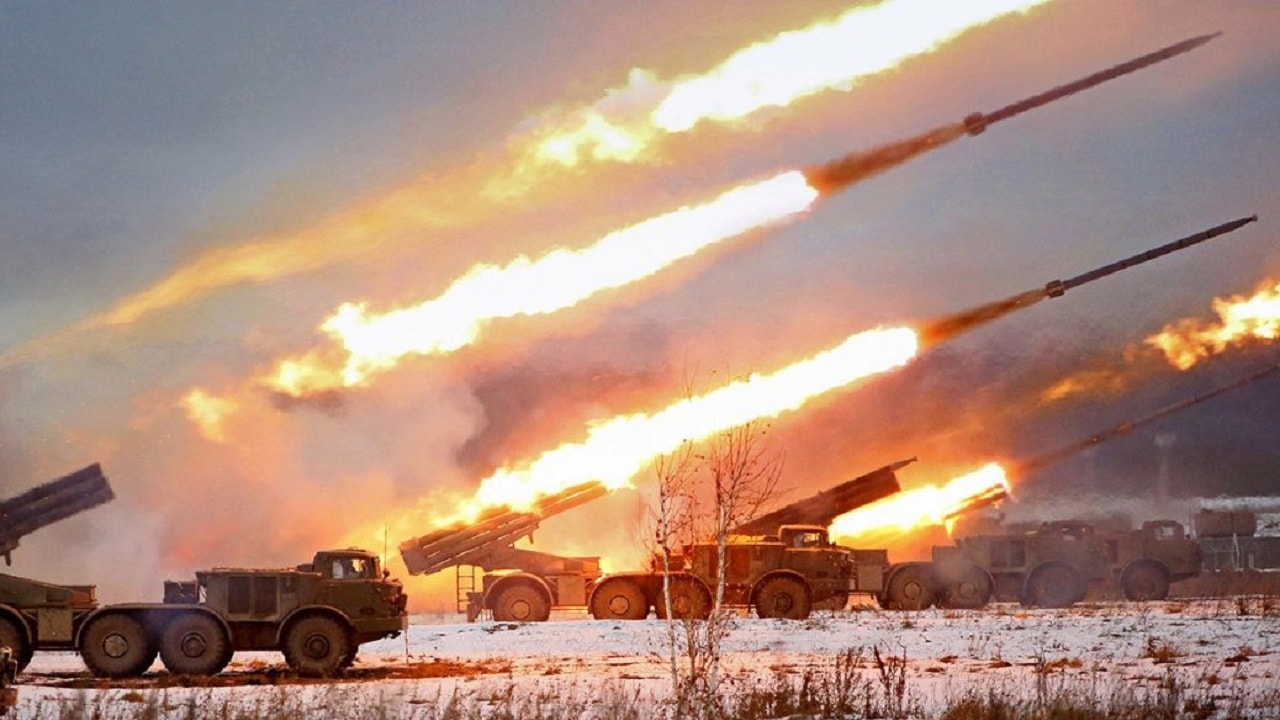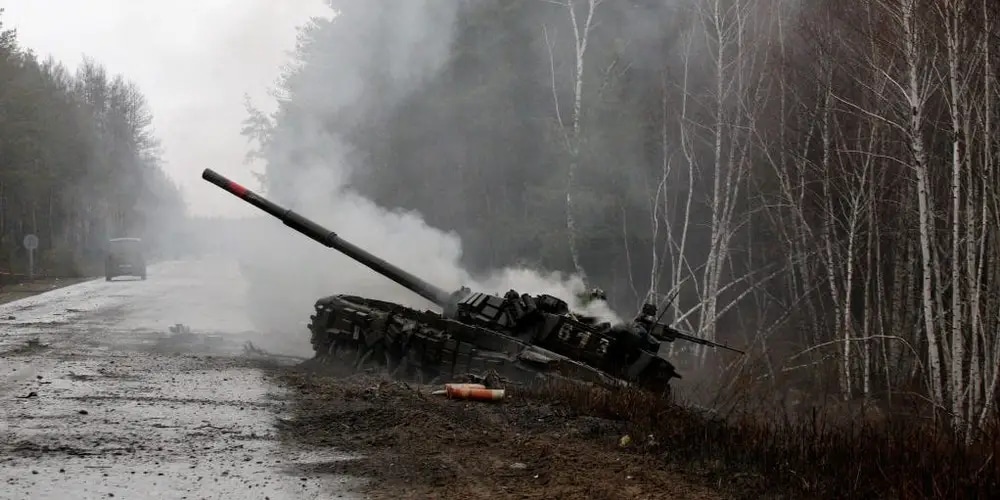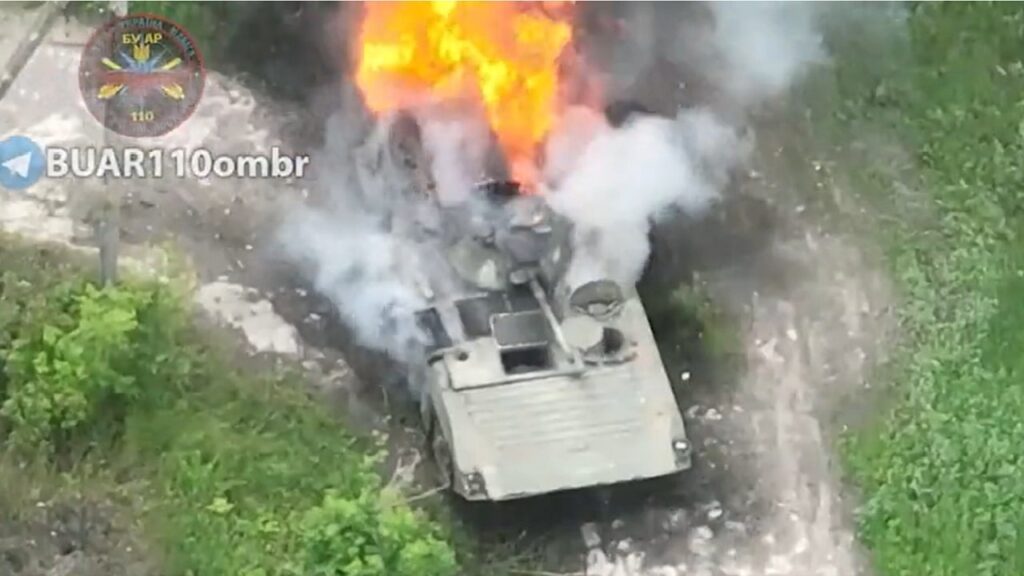It has been 129 days since the Russian invasion began. On Saturday, the fighting is mainly taking place in the outskirts of Lysychansk.
The fighting goes on
The Russian military is trying to capture Lysychansk but the Ukrainian forces are putting up a stiff resistance. Both sides are relying on long-range fires for defense and offense, with the Russian forces having a distinct advantage in artillery. Reports indicate that for every volley the Ukrainians launch at the Russians, the Russians launch 15 to 20 back.

“Russian forces continued efforts to encircle Lysychansk and conducted offensive operations to the south and southwest of the city. Russian forces have likely not yet reached the T1302 Bakhmut-Lysychansk highway on the ground but are denying Ukrainian forces use of it by continuing artillery and airstrikes against remaining Ukrainian positions along the road. Russian forces focused on regrouping and improving their tactical positions north of Slovyansk,” the Institute for the Study of War assessed in its latest operational update.
Russian casualties
Every day, the Ukrainian military is providing an update on their claimed Russian casualties. These numbers are official figures and haven’t been separately verified.
However, Western intelligence assessments and independent reporting corroborate, to a certain extent, the Ukrainian casualty claims. For example, the Oryx open-source intelligence research page has visually verified the destruction or capture of almost 800 Russian tanks; this assessment has been confirmed by the British Ministry of Defense.

The same independent verification exists for most of the other Ukrainian claims. Only recently the Pentagon acknowledged that the Russian military has lost thousands of combat vehicles of all types, including over 1,000 tanks, and dozens of fighter jets and helicopters.
Furthermore, more recent reports that are citing Western intelligence officials indicate that the Russian military has suffered up to 20,000 fatalities in the war so far.
It is very hard to verify the actual numbers unless one is on the ground. However, after adjusting for the fog of war and other factors the Western official numbers are fairly close to the Ukrainian claims.
As of Saturday, the Ukrainian Ministry of Defense is claiming the following Russian casualties:
- 35,870 Russian troops killed (approximately three times that number wounded and captured)
- 3,737 armored personnel carriers destroyed
- 2,614 vehicles and fuel tanks
- 1,582 tanks
- 800 artillery pieces
- 653 tactical unmanned aerial systems
- 217 fighter, attack, and transport jets
- 246 Multiple Launch Rocket Systems (MLRS)
- 186 attack and transport helicopters
- 143 cruise missiles shot down by the Ukrainian air defenses
- 105 anti-aircraft batteries
- 61 special equipment platforms, such as bridging equipment
- 15 boats and cutters
- four mobile Iskander ballistic missile systems
Over the past weeks, the rate of Russian casualties has slowed down significantly despite continuous pressure and offensive operations in the Donbas. This suggests two things: First, the Russian commanders are taking a more cautious approach to their offensive operations, fully utilizing combined arms warfare to achieve their goals; and second, the Ukrainian forces are running out of combat power or ammunition — and this is expected after over three months of war against the Russian military. Recent reports from the ground suggest that both of these factors are true, and that the fatigue of warfare is catching up on both sides.

For most of the last month, the Russian military suffered the greatest casualties around the Slovyansk, Kryvyi Rih, and Zaporizhzhia areas, reflecting the heavy fighting that was going on there. As the days went on, most of the heavy fighting shifted toward the direction of Bakhmut, southeast of Slovyansk, around Severodonetsk, a key Ukrainian town, and Lyman.
Then the location of the heaviest casualties shifted again westwards toward the area of Kherson and Zaporizhzhia — where one of Europe’s largest nuclear plants is located — as a result of a Ukrainian counteroffensive in and around the area.
On Saturday, Ukrainian forces inflicted the heaviest casualties in the vicinity of Bakhmut, where the Russian forces are trying to advance and cut off Severodonetsk from the rear, and Kurakhove, near Donetsk.
The stated goal of the Russian military for the renewed offensive in the east is to establish full control over the pro-Russian breakaway territories of Donetsk and Luhansk and create and maintain a land corridor between these territories and the occupied Crimea.

